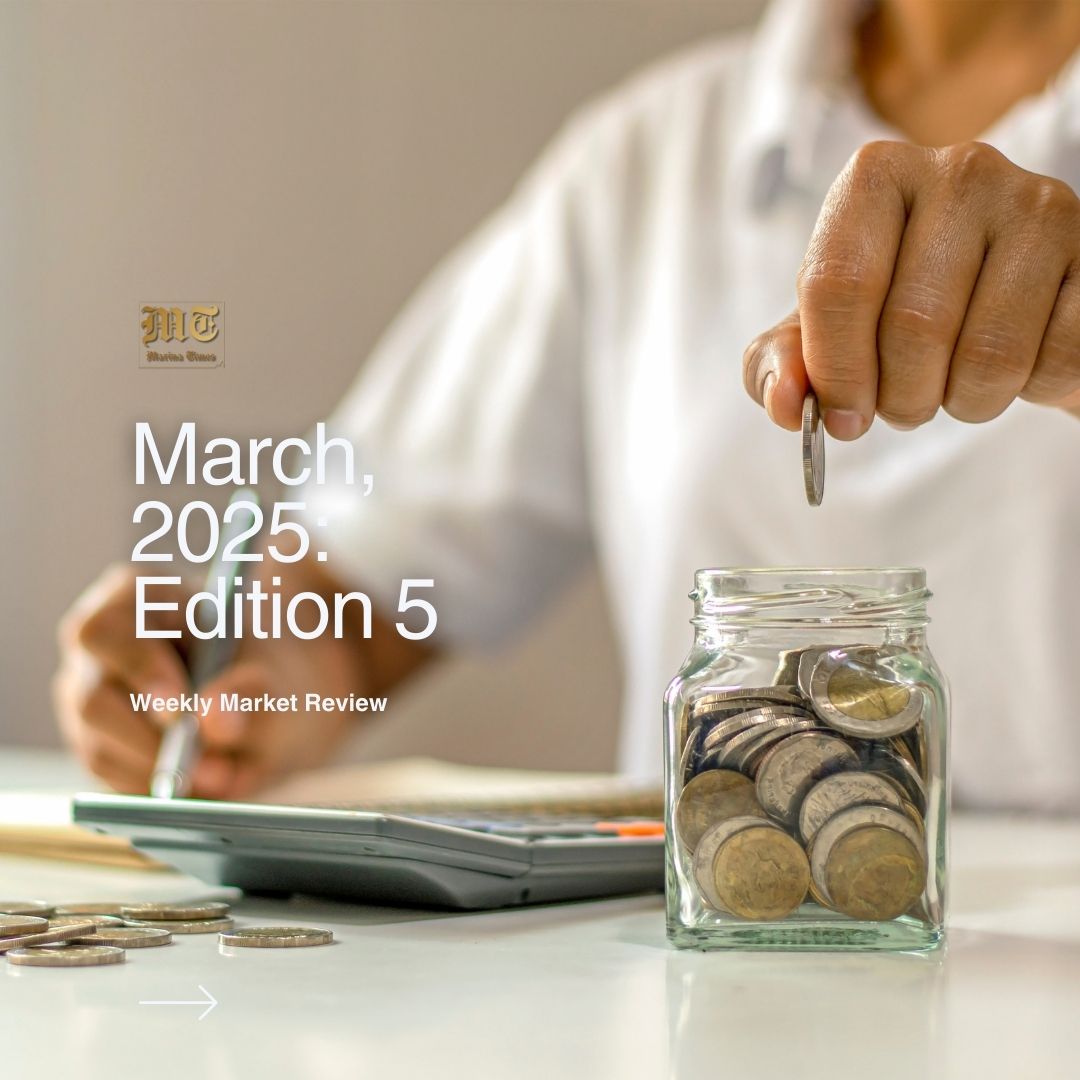

The March 2025 FGN bond auction, conducted on 24 March, 2025, featured the reopening of two instruments: the 19.30% FGN APR 2029 (5-year bond) and the 19.89% FGN MAY 2033 (9-year bond). The results from the auction indicated contrasting investor sentiments toward shorter- and longer-term bonds.
In February 2025, Nigeria’s fixed-income market experienced a notable increase in turnover, reaching ₦18.47 trillion. The increase in turnover represents a 17.96% month-on-month rise from January’s turnover of ₦15.65 trillion. The rise was likely driven by increased issuance, maturities, and higher investor interest. Government bonds and Treasury Bills were the key drivers, with government bonds playing a major role due to their attractive yields.
The surge was primarily driven by heightened activities in Treasury Bills (T-Bills) and other fixed-income securities. Investors strongly preferred T-Bills with maturities between six months and one year, accounting for 49.40% of the secondary market turnover for sovereign fixed-income securities.
In the week under review, the Naira fluctuated between a high of $/₦1,542.00 on Friday and a low of $/₦1,520.00 on the same day, closing at $/₦1,536.00 on Friday. The money market saw a liquidity surplus of ₦969.77 billion. In line with this, short-term borrowing rates saw a decline, with the O/N rate dropping to 26.96% from the previous week’s 32.90%, while the OPR saw a drop by 59 basis points—from 32.40% to 26.50%
At the beginning of the week, the markets witnessed the final bond auction for Q1 2025. For the 5-year bond, the DMO offered ₦200 billion, but received a relatively low subscription of ₦59.07 billion, with only three successful bids. The final amount allotted stood at ₦4.69 billion, with a non-competitive allotment of ₦91.30 billion. The stop rate settled at 19.00%, down by 20 basis points when compared with the last auction.
On the other hand, the 9-year bond witnessed a significantly higher demand, with a total subscription of ₦471.24 billion against an offer of ₦100 billion. The total allotted stood at ₦266.54 billion, with a stop rate of 19.99%. Again, there was a decline of 6 basis points compared to its last auction close in September 2024.
BONDS TENOR | APRIL 2029 | MAY 2033 |
AUCTION DATE | 24-03-2025 | 24-03-2025 |
SETTLEMENT DATE | 26-03-2025 | 26-03-2025 |
MATURITY DATE | 17-04-2029 | 15-05-2033 |
TENORS | 5-YEAR | 9-YEAR |
AMOUNT OFFERED (₦) | 200 BILLION | 100 BILLION |
SUBSCRIPTION (₦) | 59.069 BILLION | 471.241 BILLION |
AMOUNT ALLOTTED (₦) | 4.686 BILLION | 266.542 BILLION |
STOP RATES (%) | 19.0000 | 19.9900% |
PREVIOUS STOP RATES (%) | 19.2000 | 20.0500 |
METRICS | February 2025 | March 2025 | Key Observation |
TOTAL SUBSCRIPTION | ₦1.63 trillion | ₦530.31 billion | Stronger investor demand in February |
TOTAL ALLOTTED | ₦910.39 billion | ₦271.23 billion | Government accepted fewer bids in March |
HIGHEST SUBSCRIPTION | 7-Year bond (₦1.16 trillion) | 9-Year bond (₦471.24 billion) | February had record-high demand |
LOWEST SUBSCRIPTION | 5-Year bond (₦465.15 billion) | 5-Year bond (₦59.07 billion) | March 5-Year bond demand dropped sharply |
MARGINAL RATES | 19.20% – 19.33% | 19.00% – 19.99% | March had slightly lower rates on the 5-year bond |
Later in the week, the Nigerian Treasury Bills (NTBs) auction was conducted, and it reflected a continued strong demand for government securities, particularly for the longer-tenored 364-day bills. The auction offered ₦80 billion, ₦120 billion, and ₦500 billion for the 91-day, 182-day, and 364-day tenures, respectively.
Investor appetite was significantly skewed towards the 364-day bills, which received an overwhelming subscription of ₦1.36 trillion, far exceeding the offered amount. Despite this high demand, the final allotment stood at ₦745.8 billion. In contrast, the shorter-tenure instruments saw relatively lower interest, with the 91-day and 182-day bills attracting subscriptions of ₦38.6 billion and ₦27.6 billion, respectively, and a total allotment of ₦38.6 billion and ₦24.2 billion, respectively.
The range of bid rates for the various tenors indicates investors’ yield expectations, with the 364-day bills attracting bids between 17.50% and 23.02%, while the 91-day and 182-day bills had lower bid ranges. The final stop rates for the auction settled at 18.00%, 18.50% and 19.63% for the 91-day bills, 182-day bills and 364-day bills, respectively. Illustrating that the 91-day and 182-day bills maintained their last auction close rates while the 364-day bills declined by 31 basis points.
AUCTION DATE | 26-03-2025 | 26-03-2025 | 26-03-2025 |
ALLOTMENT DATE | 27-03-2025 | 27-03-2025 | 27-03-2025 |
MATURITY DATE | 26-06-2025 | 25-09-2025 | 26-03-2026 |
TENOR | 91-DAY | 182-DAY | 364-DAY |
OFFER (₦) | 80,000,000,000 | 120,000,000,000 | 500,000,000,000 |
SUBSCRIPTION (₦) | 38,854,322,000 | 27,684,194,000 | 1,364,217,601,000 |
ALLOTMENT (₦) | 38,654,322,000 | 24,274,194,000 | 745,802,092,000 |
STOP RATES (%) | 18.0000 | 18.5000 | 19.6300 |
PREVIOUS STOP RATES (%) | 18.0000 | 18.5000 | 19.9400 |
The reported increased activity in the fixed-income market can be attributed to several factors. The Central Bank of Nigeria’s monetary tightening measures have made T-Bills more attractive to investors seeking higher yields. Additionally, the government’s efforts to manage liquidity and control inflation have influenced investor behaviour, leading to a shift towards fixed-income securities.
In February 2025, Nigeria’s fixed income market witnessed a significant surge in turnover, rising by 17.96% month-on-month to reach ₦18.47 trillion from the ₦15.65 trillion reported in January.
The rise in turnover was predominantly fueled by heightened secondary market transactions in sovereign fixed-income securities, with T-Bills leading the charge. Notably, instruments with maturities ranging from six months to one year accounted for approximately 49.40% of the total T-Bills transactions.
Overall, the 17.96% growth in the fixed-income market turnover in February 2025 signalled a positive momentum in investor participation, driven by favourable yields, monetary policy adjustments, and a search for stability amidst broader economic uncertainties. As market dynamics continue to evolve, the fixed-income segment is expected to remain a critical pillar in Nigeria’s financial markets.
In March 2025, the Nigerian equities market recorded impressive gains, with investors raking in ₦369 billion in market capitalization growth. This rally was fueled by increased investor confidence, strong corporate earnings reports and favourable macroeconomic indicators that signalled resilience in the capital market.
Nigeria’s fixed-income market had a significantly higher turnover than its equity market, while the stock market saw growth in market capitalization and the All-Share Index, trading activity remained relatively lower. In contrast, fixed-income securities recorded ₦15.65 trillion in January and ₦57.057 trillion between January and February, reflecting the preference of investors for high-volume debt instruments over equities.
The bullish sentiment was largely driven by banking, consumer goods and industrial stocks, which saw significant price appreciation amid improved financial performance and positive market fundamentals. The robust performance of stocks helped sustain the momentum built from previous trading sessions, with investors leveraging dividend announcements and attractive valuations to increase their equity holdings.
Market analysts attributed the uptrend to a combination of factors, including foreign portfolio inflows, improved liquidity in the foreign exchange market and the Central Bank of Nigeria’s (CBN) monetary policy stance, which created a favourable environment for equity investments.
Meanwhile, a noticeable shift towards mutual funds was observed as more investors sought diversification and risk management in their portfolios. The increasing appeal of mutual funds, particularly money market and fixed-income funds, indicates a growing awareness among investors of the need for structured investment vehicles that offer stability amidst market volatility.
The rise in mutual fund subscriptions can be attributed to several factors, including concerns over potential stock market fluctuations, the attraction of professional fund management and the relatively lower risk associated with these investment vehicles.
As the equities market continues to evolve, the link between direct stock investments and mutual fund inflows highlights the changing dynamics of investor preferences. While the bullish trend in the equities market presents opportunities for capital appreciation, the shift towards mutual funds speaks to the increasing demand for diversified and professionally managed investment options.
As we await the release of the Q2 2025 bond and bills auction calendar, market participants are keenly observing the pattern of adjustments made by the DMO in the previous quarters. In the last quarter of 2024, the DMO made a notable move by removing the 2033 bonds from the issuance calendar. However, in the most recent Q1 2025 auction, they reversed course by replacing the 2031s with the 2033s, signalling a strategic shift in debt management.
With Q2 2025 approaching, one of the key speculations in the fixed-income market is whether we will see a new issuance for either the 2029s or the reintroduced 2033 bonds. The rationale behind such a move would likely be driven by factors such as yield curve dynamics, investor demand and the government’s borrowing strategy. Where the DMO opts for a fresh issuance in the 2029s, it could be aimed at deepening liquidity in the mid-tenor range. On the other hand, if the 2033s are further solidified, it might reflect the government’s preference for lengthening the debt maturity profile while leveraging investor appetite for long-term instruments.
In the same vein, in the Nigerian Treasury Bills (NTBs) segment, a similar trend of unpredictability has played out. We saw the Central Bank of Nigeria (CBN) review the NTB calendar for Q1 2025, and instead of following the traditional bi-weekly pattern, the market saw NTB auctions being conducted every week in March. This move likely reflected heightened short-term liquidity needs.
Looking ahead to Q2 2025, the key question remains: Will the NTB calendar maintain the aggressive weekly issuance pattern, or will the CBN revert to its usual schedule? If the weekly auctions persist, it could signal a continued effort by the government to manage liquidity flows, absorb excess cash in the system, or meet pressing fiscal obligations. On the other hand, a return to a more spaced-out auction schedule could indicate confidence in stabilizing market conditions. Notwithstanding, until the Q2 2025 calendars are officially released; we shall keep our fingers crossed, watching for the direction in the months ahead.
As Q2 2025 unfolds, the financial markets expect significant liquidity injections, with coupon inflows exceeding ₦2.5 trillion expected in April alone. These inflows will span across various fixed-income instruments, including Treasury Bills (T-Bills), Federal Government Bonds, and Open Market Operations (OMO) maturities.
Specifically, among the bond maturities contributing to this influx are the April 2032s, April 2037s, and the April 2049s. Given the magnitude of these inflows, the market is likely to witness increased activity in secondary market trading as investors seek to reinvest their matured proceeds into available fixed-income instruments or explore alternative investment options.